These are views of Alexandria during one of Islam’s most revered and holy festivals. Together with Eid-al-Fitr (a festival at the end of Ramadan), these feasts represent the completion of two of the five pillars of Islam, through which the devout fulfill their duty and renew their commitment to God.
On Eid-al-Adha the offering of an animal symbolizes the prophet Abraham’s obedience to God and readiness to sacrifice his only son. Today, sacrifice is re-enacted not as a blood offering nor as penance, but in remembrance of Abraham’s submission to God’s will.
Those families that can afford to sacrifice an animal retain one third, give another third to relatives, friends and neighbors and donate the remainder to the poor and needy. Giving to others, an expression of generosity, is one of the pillars of Islam.
Beginning on the 10th day of Dhu’l-Hijja, the last month of the Islamic lunar calendar, sheep and cows and camels fill Alexandria.
Soon streets & sidewalks in the Anfushi market pool with blood.
Butchers prepare racks of ram,
or beef or goat or camel. .
Heads, for soup, and later, to be used as cups for drinking.
Husband and wife don their finest garb,
and join those bound for the mosque for special Eid prayers.
At Qaitbay citadel—which stands on the ruins of the ancient Alexandrian lighthouse, one of the seven wonders of the Ancient world—tourists snap shots with camera or computer,
and snap again.
.
.
Meanwhile, Monty bar at the old Hotel Cecil in downtown Alexandria—where Laurence Durrell, Somerset Maugham and EM Forster once drank—stays resolutely dry.
.
Freed from school, some boys ride carts along the seafront in the afternoon,
others stroll,
or sit, talking;.
still others sell cotton candy.
A woman enjoys the Mediterranean,
girls whisper,
men play backgammon,
.
drink tea,
smoke shisha,
.
or wait, with their sons, in smoke-filled corners for roasting meat.
.
—Natalia Sarkissian


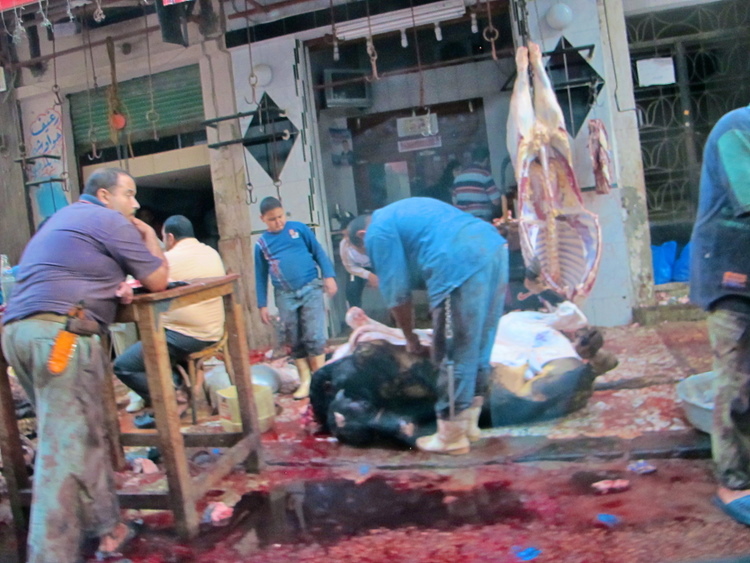

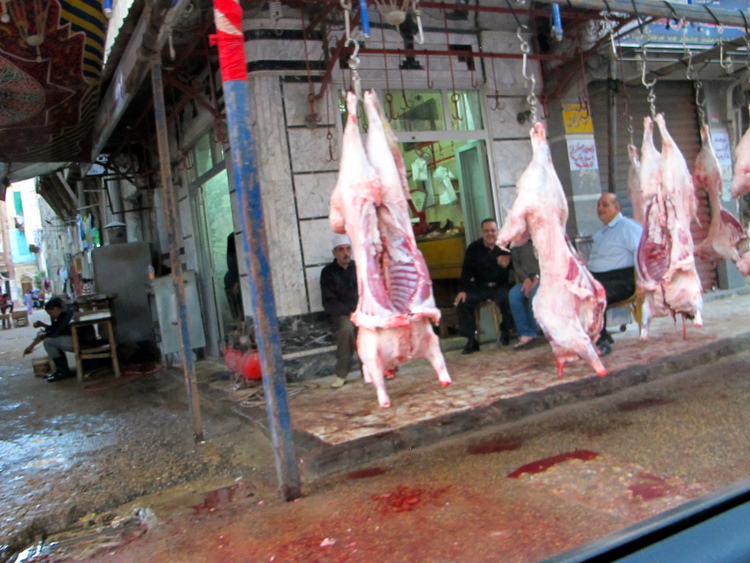

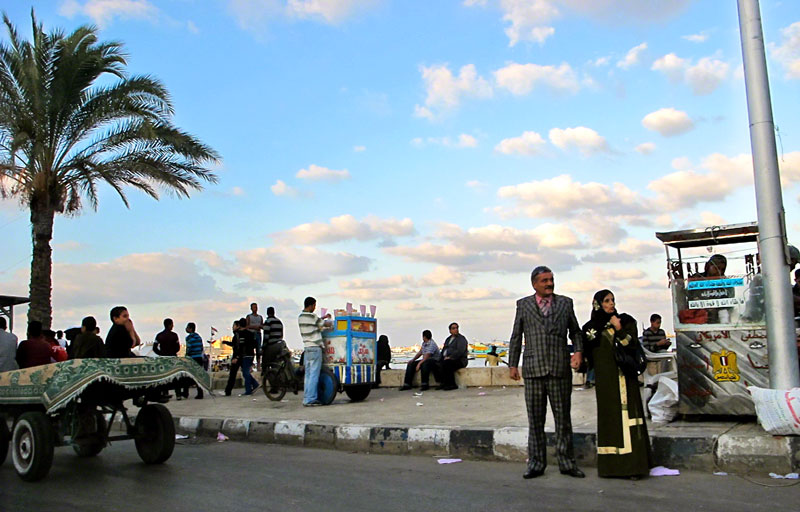
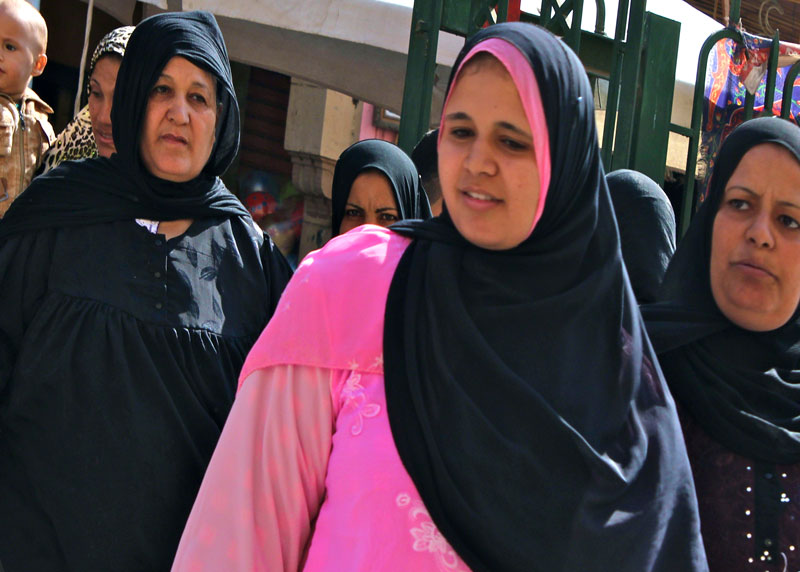
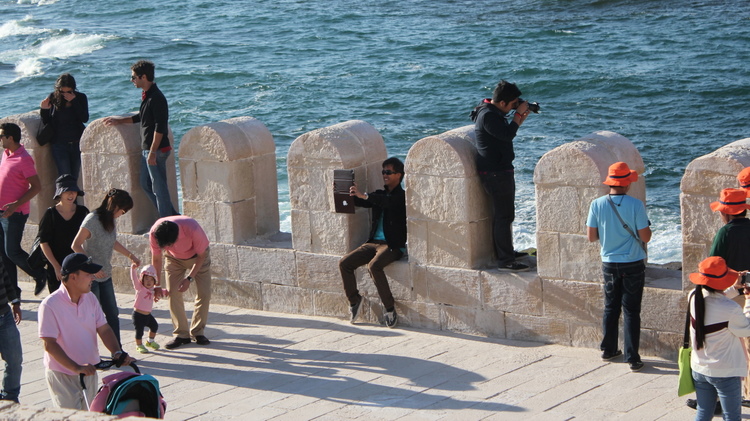
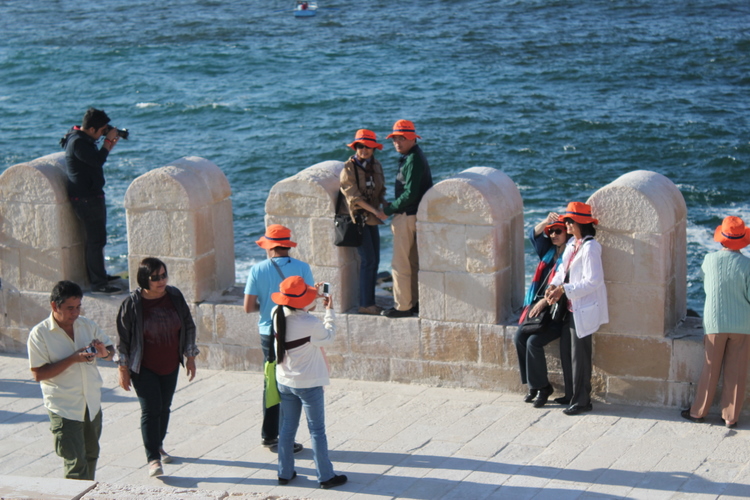
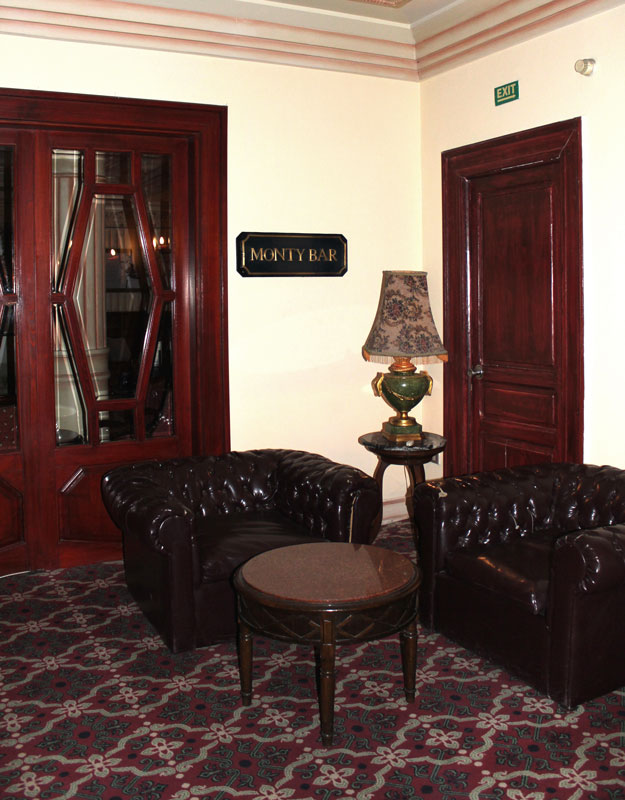
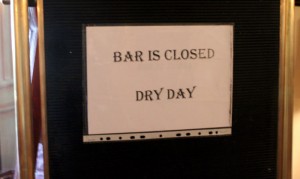
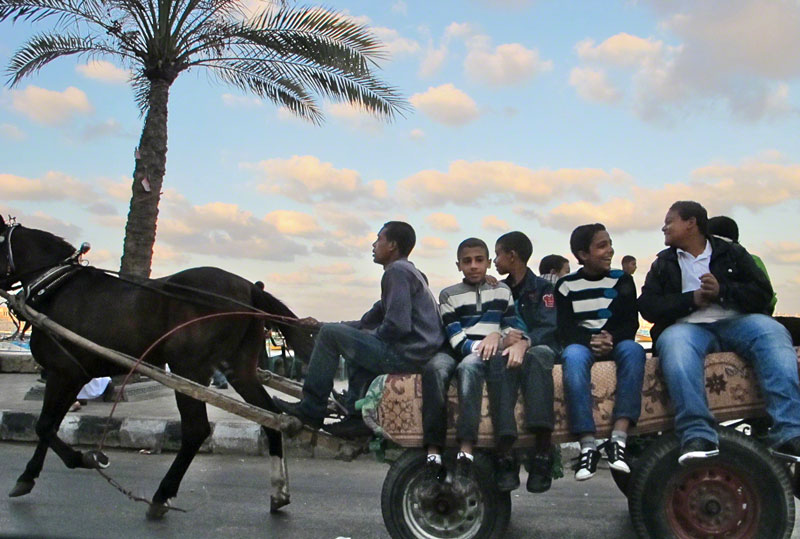

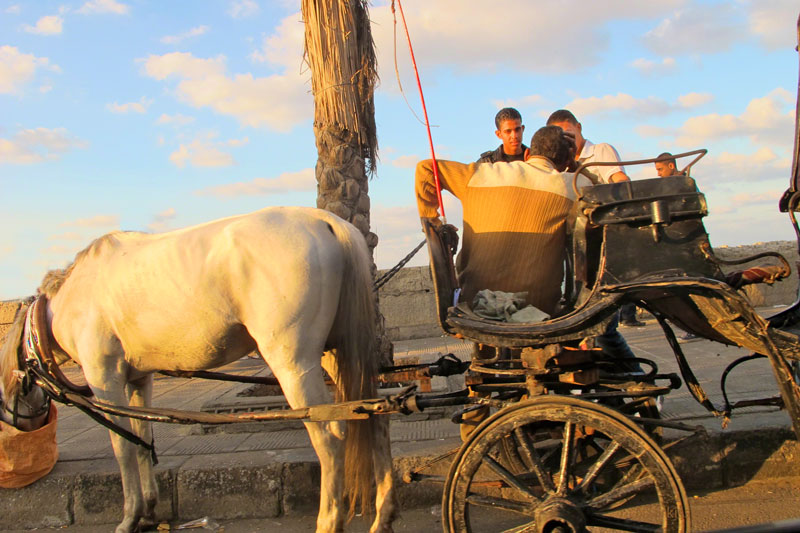
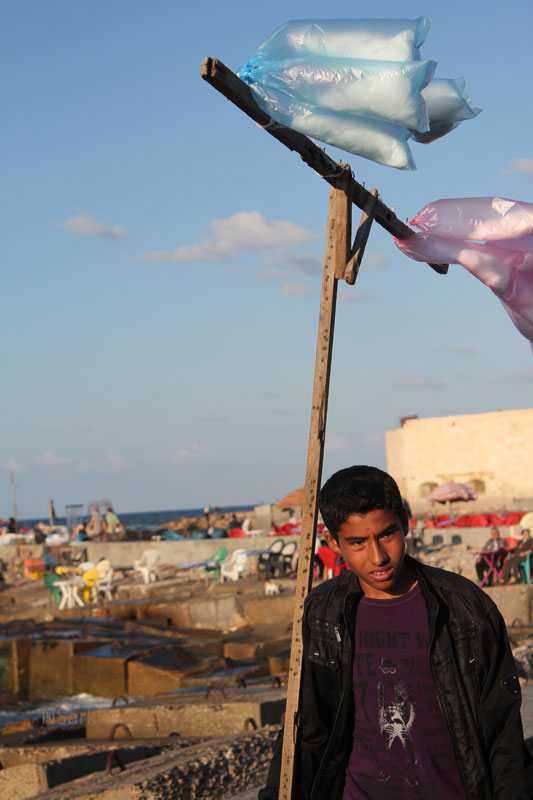
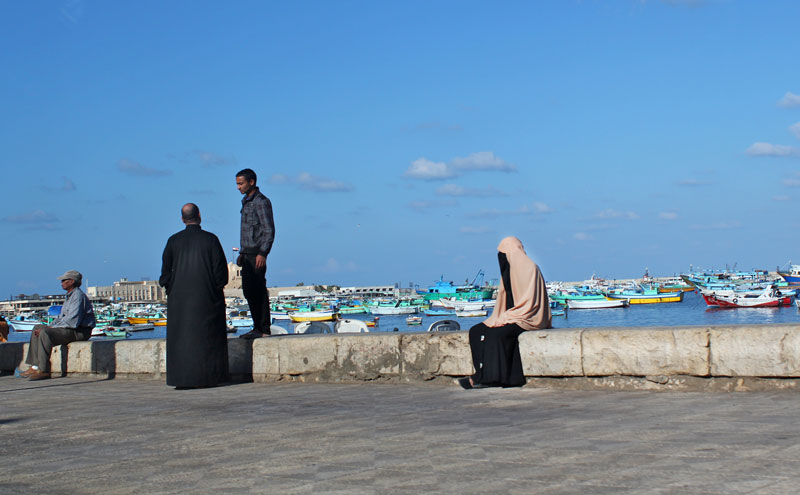
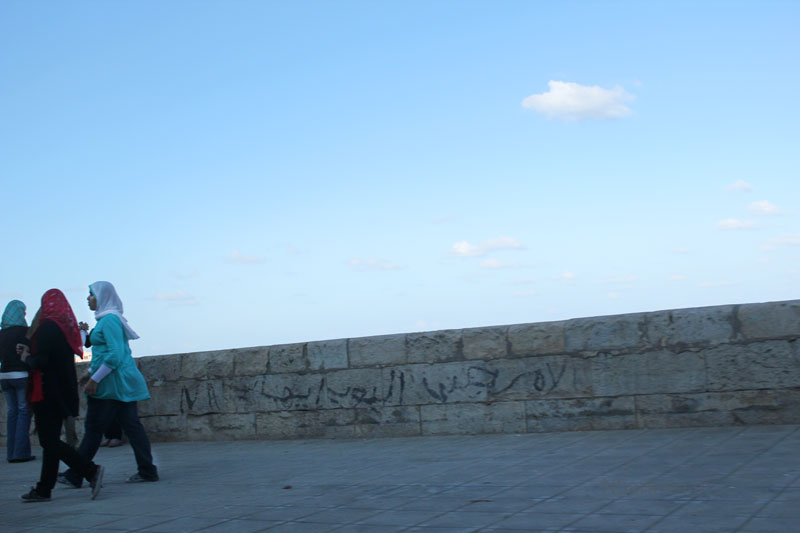

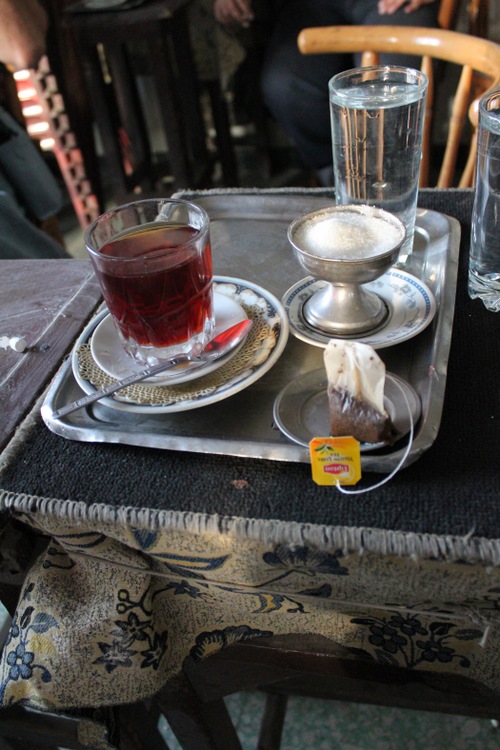
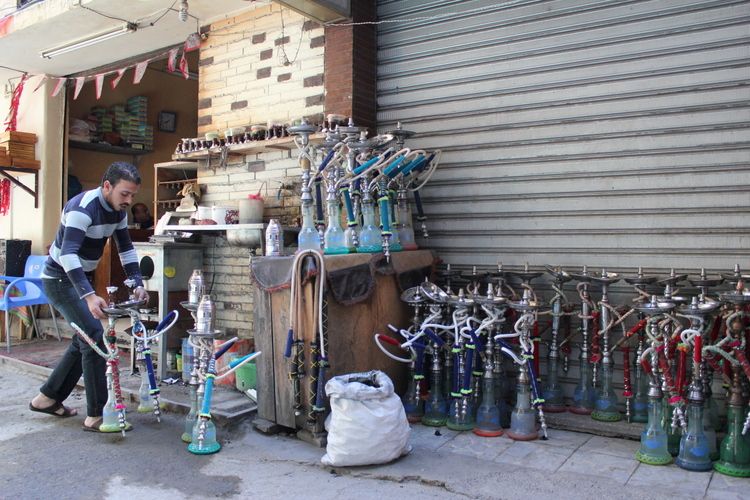

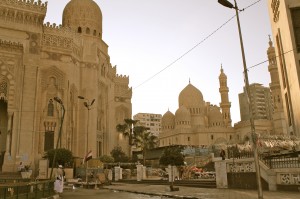
Thanks for this wonderful photo essay, Natasha! How effective to begin with two live animals before the images of slaughter and carcasses.
Amazing photos. I especially admire the pile of heads. 🙂
Odd to think how in the West all the slaughter and butchery is hidden away from the public.
And, of course, having once upon a time loved The Alexandria Quartet, I am esp. inspired to wonder by the dry hotel bar.
Thanks! The sheep and the goat were tied up near the butchery. They were the last in line. I took the picture of the pile of ram heads through a car window. I would have liked to have gotten out and taken the shot without the dirty glass between us, but the butcher was wielding a meat cleaver and I didn’t want to get in his way….
Bravo, Natasha. Another powerful set of photographs with a story to tell. The slaughter scene is particularly powerful.
nat sei bravissima, dovremmo organizzare una mostra!!!!
Lynne and Betta, thanks for taking a look!
Love the backgammon shot, Nat! Another really wonderful collection.
Really spectacular photos, Nat. So colorful and expressive of a way of life so different from ours here in the States. Thanks for the glimpse of Egypt!
The richness and intimacy of your photography touches me. The close up of the tea, the far-away shot of the woman in the hijab sitting alone next to the sea. Fabulous!
Mai, glad you liked the backgammon. The bar where these men were playing was just like such a bar should be. Martha, I know, so different from the West. Wendy, thanks, I’m glad you liked these!
Thanks, Nat–Enjoyed what felt like an “inside look.” You are intrepid. Did you have to ask permission to take some of these photos? The tea shot made me smile–Lipton’s! keep up the terrific work. Cheers, Frances
Thanks Frankie! I do ask permission to take many photos, and it’s usually granted when one proffers “backshish” (a tip). The backgammon players didn’t mind my shooting them and weren’t interested in backshish (they were too interested in their game).
People have told me that nothing remains of old Alexandria. Obviously not true. Culture endures. Thank you!
I wonder whether they were talking about a different Alexandria?! 🙂 Egypt’s Alexandria exists in layers:
there’s the Roman amphitheater, Christian catacombs, the citadel (dating from the Middle Ages built over the ruins of the famed Ancient lighthouse), fragments of Hellenistic mosaics and statuary, old churches and mosques, as well as some beautiful 19th century architecture and a planetarium & library built in the 20th c.
You are obviously more trustworthy than my past informants! Maybe the wrong impression dates back to the days when I was enthralled with the Alexandria Quartet and people just meant the old ex pat colonialist world was gone. I thought they meant the interesting stuff was gone!
I was also trying to ask if you are still in Egypt but my reply timed out and didn’t send. Amazing time to be there but please stay safe.
Amazing indeed! What’s fascinating is how much things haven’t changed that much in the past century….Egyptians are still dissatisfied, still voicing their dissatisfaction and still dying.